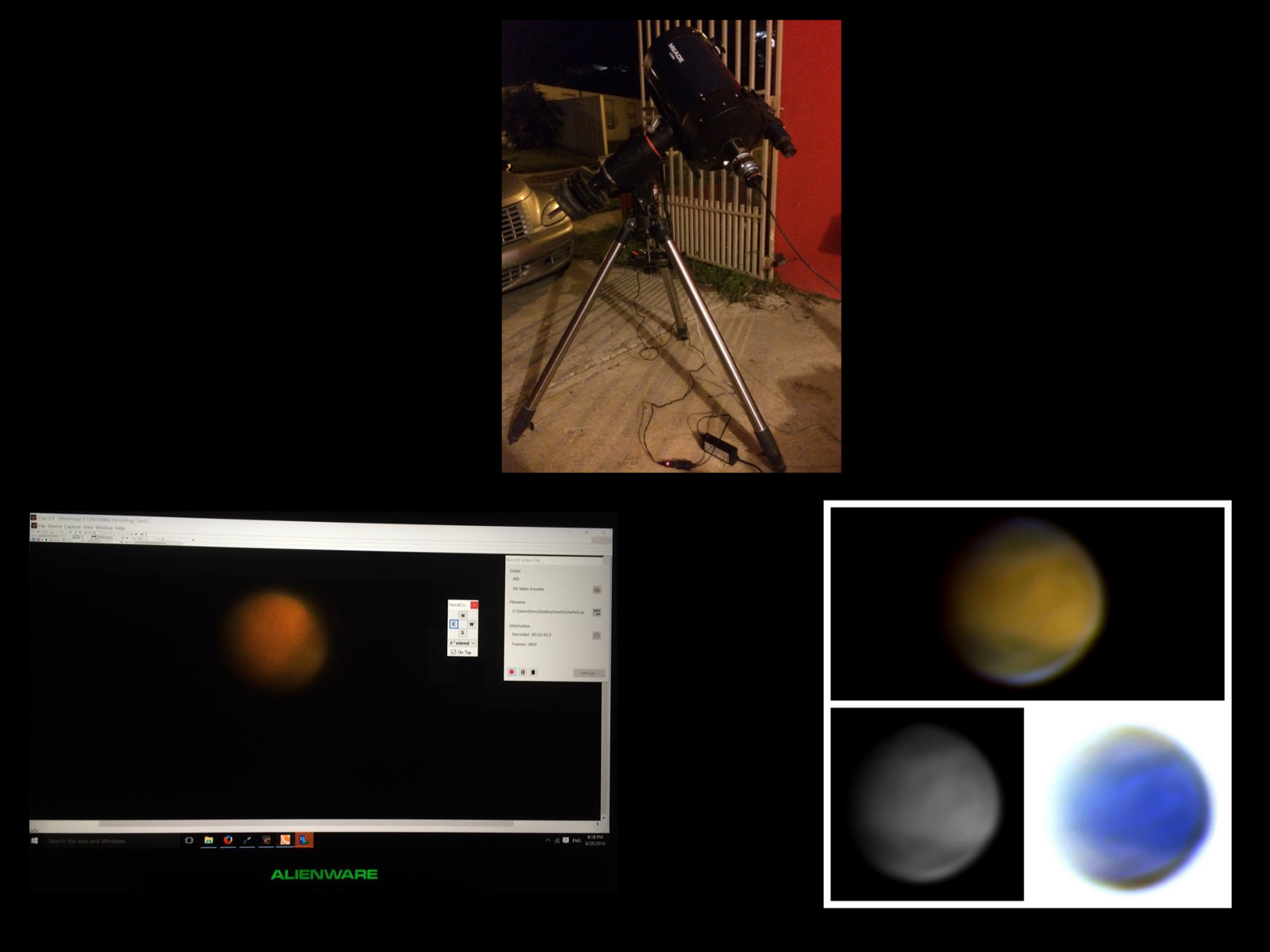Report

Hot night of June 25, 2016, I proposed to capture the planet Mars from my home in Caguas, Puerto Rico. I built my astronomical equipment (Meade LX90, Orion Mount Sirius EQ-G, barlow and camera Luminos Celestron NexImage 5) all controlled by stellarium scope and Celestron ASCOM drivers installed on a laptop Alienware 17. At 8:30 pm, I started capture the planet Mars at 25 fps a video of 3.30 minutes at 1024 x 768 resolution. The weather conditions were not optimal because it is going through a curtain of particulate dust of the Sahara.
Once completed with a catch red planet, I decided to process the GIMP program Registax 6 and having average results due to the clarity of the catch. In the first picture, you can notice the natural colors of the planet was captured by the camera NexImage 5 Celestron. You can notice the north pole which now has little snow while the southern polar cap has a large area. It is in the red planet's summer right now.
I removed the color saturation to better feel the terrain on the planet. Places such as Terra Cimmeria (black side down), Elysium Planitia (center) and Utopia Planitia (black top part) can be seen. In the photo on the right, the colors are reversed through the curve in GIMP to better see the mountainous elevations Phlegra Dorsa.
The experience of making planetary astrophotography is knowing that from your privacy of your home can conduct scientific research in the amateur aspect, see the variations of environments and have sufficient data to measure changes through logbooks and monitoring.
References:
Astrofotografia y Ciencia - Astrofotografia Planetaria - El Planeta Marte 6/25/2016
http://astrofotografiayciencia.blogspot.com/2016/06/astrofotografia-planetaria-planeta.html









Comments